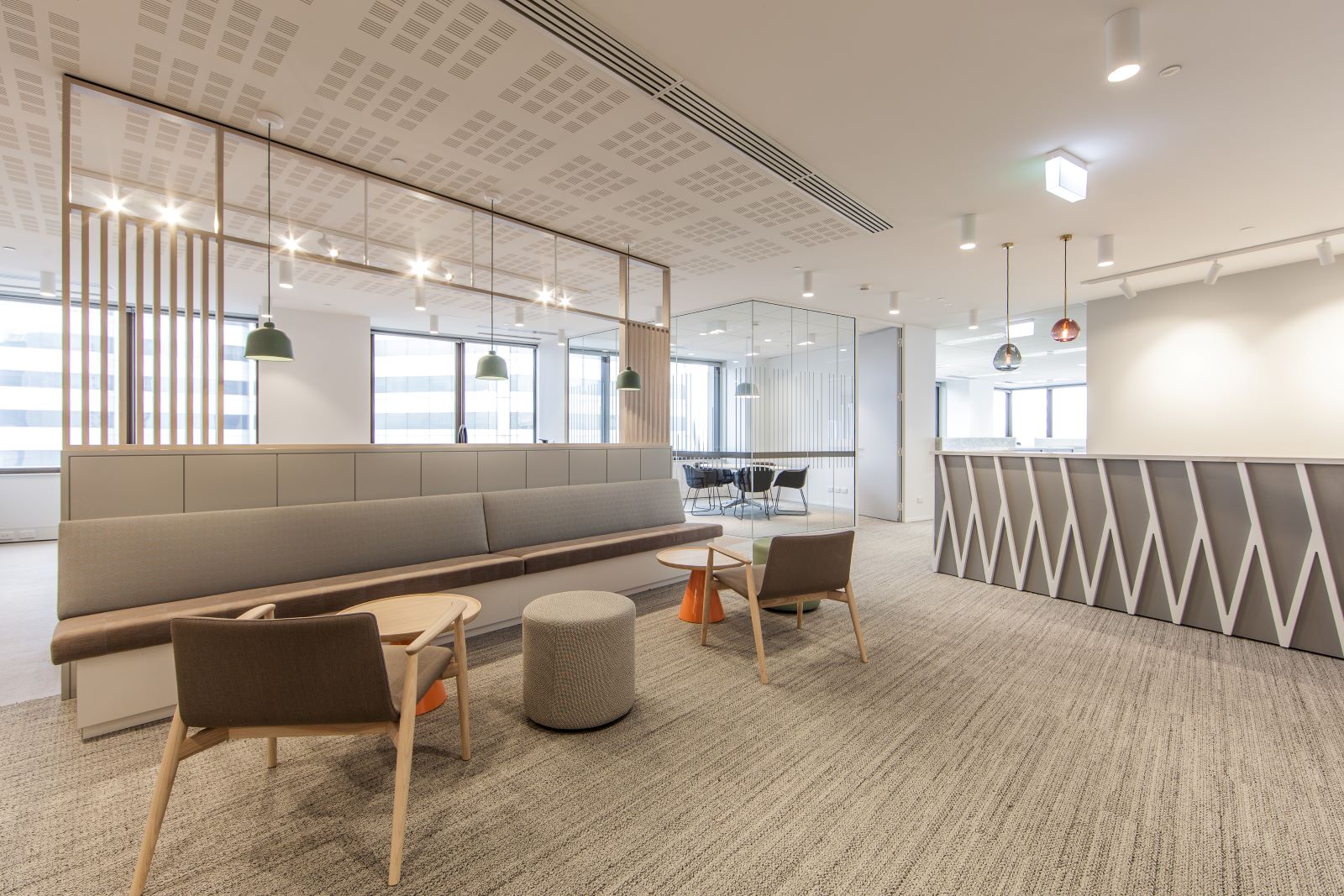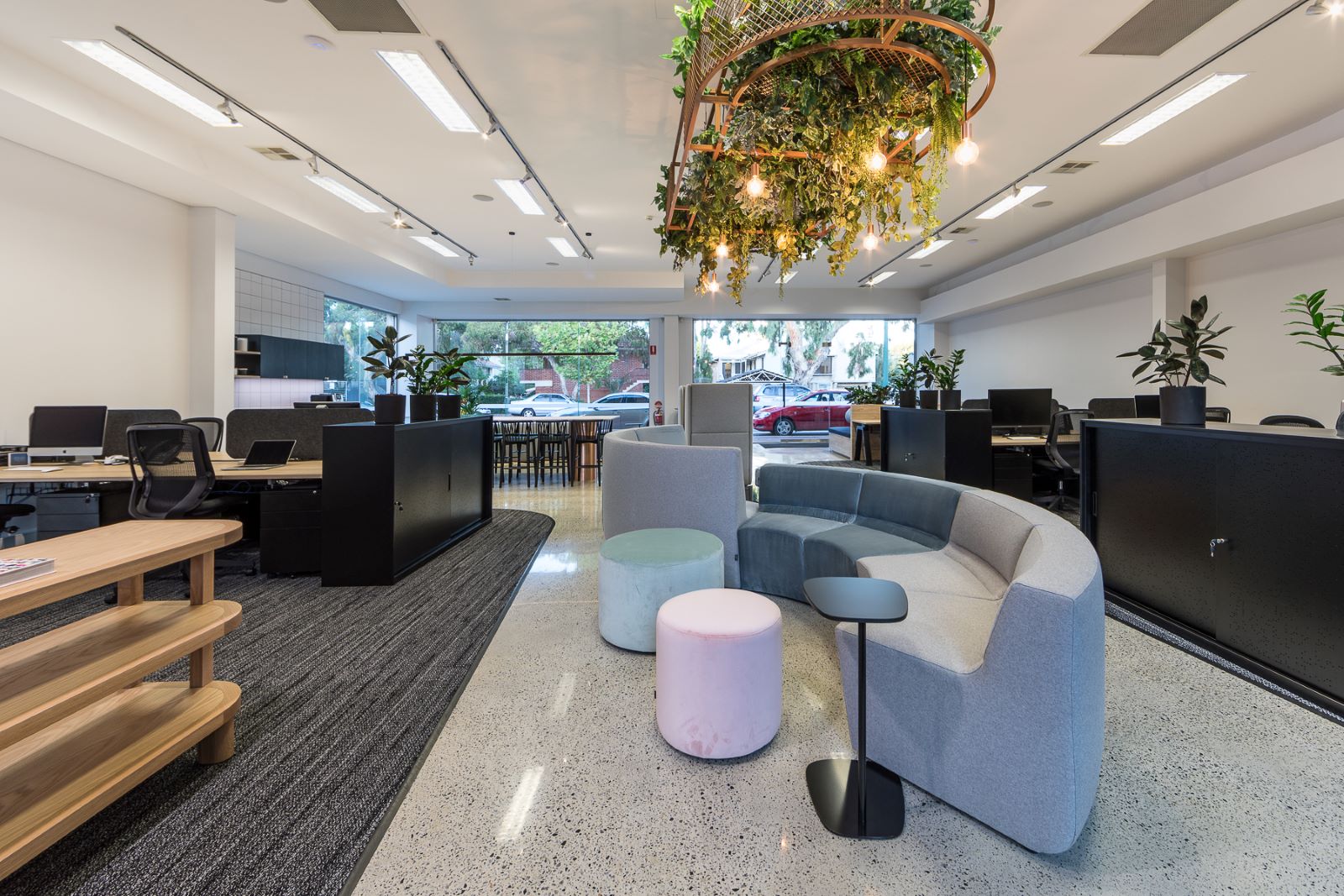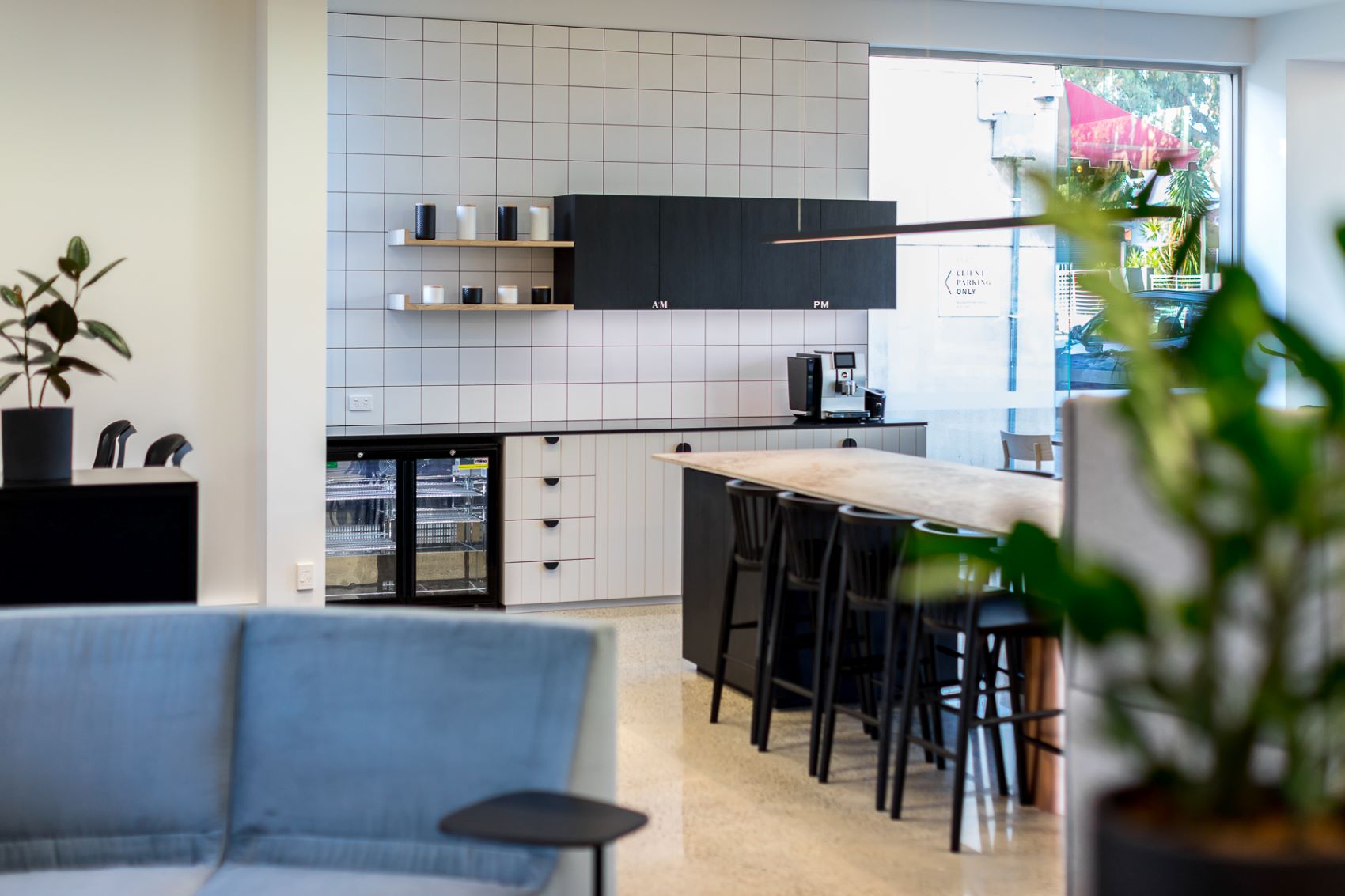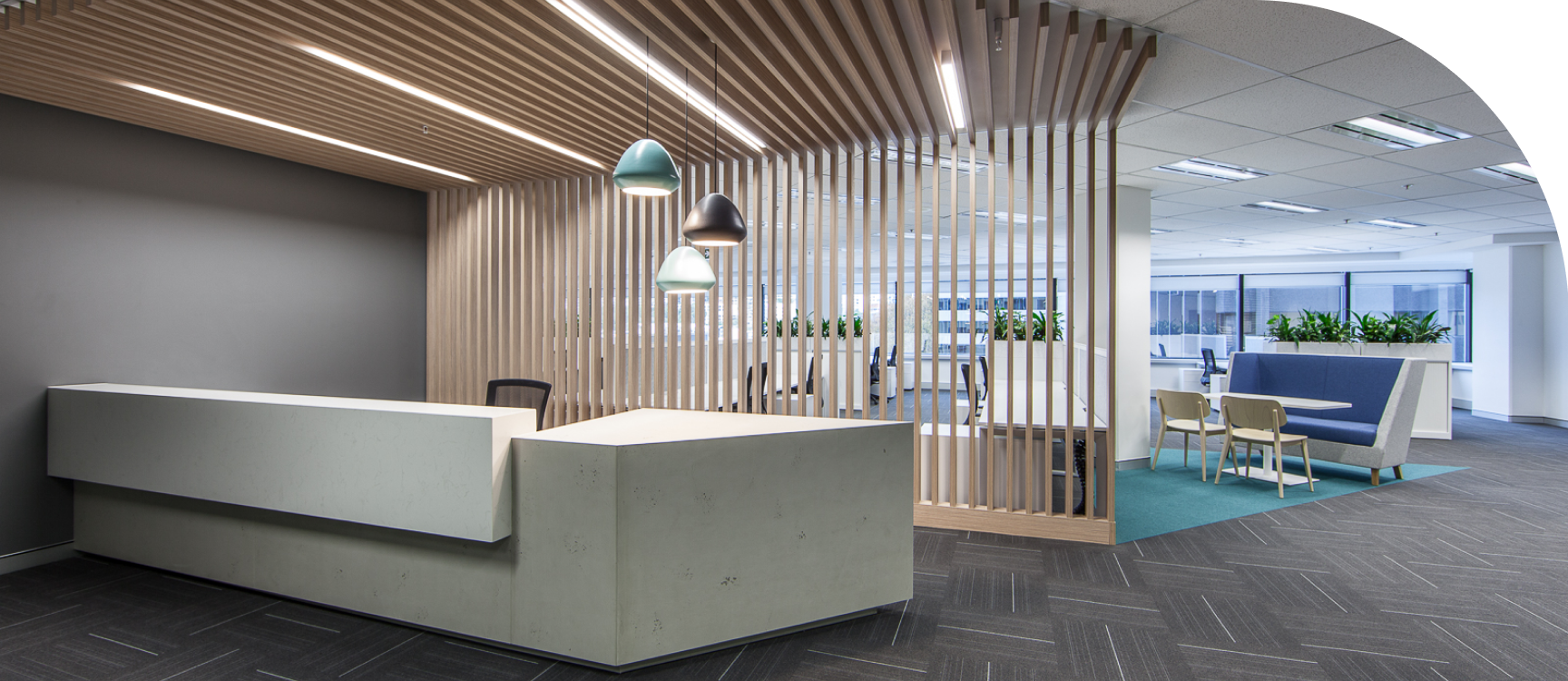How does an office or an organisation not just meet current standards of modern thinking and design, but manage to stay there, and sustain it?
Counter-intuitively, it as taken quite a while for ergonomic design trends to become commonplace when designing a new workspace or doing a fit out. Thinking about not just where people can or should work, but also how people feel in the space and how that may affect the efficiency is a relatively new advent of design. For a long time, few seemed to be harnessing the potential contribution of workplace design to their workplace strategy and bottom line.
As design trends evolve and more studies are done on the effects of our workplace feel and aesthetic and other factors, we predict decision makers will turn their attention towards the opportunities that are available through improved workplace dynamics.
For those businesses that are truly exploring how to create a workplace of the future, these Top 5 Design Trends should come into play;

Bright colours, neutrals, stripped back beams, polished concrete, and marble receptions… In this instance, it’s these trends of workplace design that we are referring to. They’ve all served their time as the “next big thing”, but each might be quickly discarded when the next ‘fashion’ arrives. Why? Because their actual impact on performance is minimal.
Aesthetically pleasing workplace designs are now considered desirable and even in some industries-essential. Designers’ focus is shifting to high levels of personalisation.
Rather than relying on seasonal colours or trendy furniture selections to carry a design, organisations now expect that designers will deeply involve themselves in capturing and understanding the DNA of the organisation. Then, starting with a blank canvas, design a workplace that translates their work styles, strategies, business needs, culture and core values into a physical setting, regardless of the “trends” at the time.
Air quality, natural light, thermal comfort, acoustics and ergonomics all have the ability to enhance productivity, increase employee satisfaction and reduce absenteeism. Employees welcome the ability to be able to seek out quiet places to manage more complex thinking or to dress comfortably, regardless of the season. As mismanagement of the workplace environment can lead to a variance in employee performance by as much as 30%, workplace design will no longer consist purely of space planning and colour selection.
Instead, as improvements in science and technology become more readily available, we now have tools that can directly measure the impact of these elements, the resultant organisational performance and the success of specific environmental changes. No longer simply designing through intuition and best practice, designers and architects will embrace the disciplines of Evidenced Based Design2. Expect to see designs premised on thorough environmental research, data capture, and strategic initiatives to empower new behavioural changes.
With technological advances, designers will also have data available to determine if an organisation’s current workplace setup is the optimal use of space or if a new style or work or office design would be more appropriate. With the ability to review their employee’s movements, which is especially critical when many are remote workers or requesting flexible working schedules, designers will have numerical evidence as to why moving them to an agiler organisational philosophy such as desk sharing or Activity Based Working would be advantageous.

Uber, Air B&B, Spotify;
The growing share economy and a subtle shift in social attitudes from ‘ownership to access’, are already beginning to impact the global perspective of the workplace.
Co-working spaces are popping up all over the globe and their success is on the rise. Largely used by entrepreneurs, start-up companies, and freelancers, their attributes may seem to be irrelevant to organisations, which remain in more traditional working environments. Yet, co-working spaces have had success in creating collaborative environments and unique user experiences that big business has not.
Understated flexible designs, a mixture of spaces and a relaxed culture encourage social interactions, connections and the sharing of ideas. With agility and collaboration as keys to the success of businesses today, more large organisations are beginning to adopt the design elements of co-working spaces.
Not only are Gen-Y inspiring flexibility in terms of desk ownership, but also they are demanding flexibility in terms of how, where and what their workspace looks like.
Mobile technology is allowing employees to work from home, on the train or in a café. Yet the office remains the place where the business comes together to collaborate, socialise and connect.
Comfortable with the freedom flexible working provides, there is a growing demand for space flexibility in terms of the type of work setting available to employees.

Evolving cultures and core values can also be supported by the careful selection & curation of workplace design.
As hierarchical structures dissolve and organisations move towards cultural values including transparency, collaboration, and connectivity, they find the older style workplaces of the past are holding them back.
Corner offices, conventional meeting rooms, one size workstations are one step up from the cubicles of the past, yet are generic in design and can oversimplify the needs of the business.
A total rethink of how we use space and how we accommodate for changing trends in design is needed to better support your staff members in the future.
Speak to the team at Davidson Projects to see how we can help transform your office space.

Contact Davidson Projects for office fit outs, office interiors, office refurbishment, base building and make good services or to receive a quote.
Contact Us